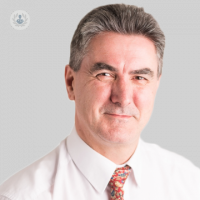What are the benefits of a sagittal split osteotomy?
Written by:Top Doctors recently spoke with distinguished consultant oral and maxillofacial surgeon, Professor Andrew Sidebottom, who described to us what a sagittal split osteotomy is. Read on below to find out more.

What is a sagittal split osteotomy?
Asagittal split osteotomy is an operation performed in order to change the position of your lower jaw (mandible) so your teeth can be appropriately aligned.
What are the benefits of this surgery?
The patient’s orthodontist should be able to align the teeth so they bite together in the best way for long-term stability. The appearance of the patient’s face should also improve.
What does the operation involve?
The operation is performed under a general anaesthetic and usually takes about one hour. You may also have injections of local anaesthetic to help with the pain after the operation, as well as steroids to reduce swelling.
Your surgeon will make cuts inside your mouth and may need to make small cuts on your cheeks. They will use instruments to separate your lower jaw while maintaining the blood supply.
The surgeon will then move the jaw and fix it in the right position using plates and screws. Before the operation, they will tell you if it is likely that you will need a bone graft to support the plates. Your surgeon will then close the cuts with stitches and may insert drains in your wounds to help reduce swelling. The stitches may be dissolvable.
What complications can occur?
Unfortunately, there are quite a number of associated complications with a sagittal split osteotomy. The main ones are as follows:
- numbness of your lower lip
- the jaw not separating as planned
- not being able to open your mouth fully (trismus)
- loss of the volume of the jaw joint and long-term relapse of the position of the lower jaw
- infection of the plates and screws
- jaw stiffness
- numbness in one or both sides of the tongue
How soon will I recover?
You will be given painkillers for one or two days, either through a tube connected to a pump (patient-controlled analgesia) or by an injection. The patient recovering will be advised to drink plenty of fluid and increase the amount of fibre in their diet to avoid constipation.
The swelling and discomfort are usually at their worst after about two days. Simple painkillers such as paracetamol and anti-inflammatory painkillers such as ibuprofen should relieve any discomfort.
In the first week of recovery, your surgeon may place some light elastic bands between your upper and lower teeth to help guide your muscles. You will need the bands for up to six weeks and they will be changed regularly. You should be able to go home after two or to three days. However, your doctor may recommend that you stay a little longer.
To book a consultation with Professor Andrew Sidebottom, head on over to his Top Doctors profile today.


